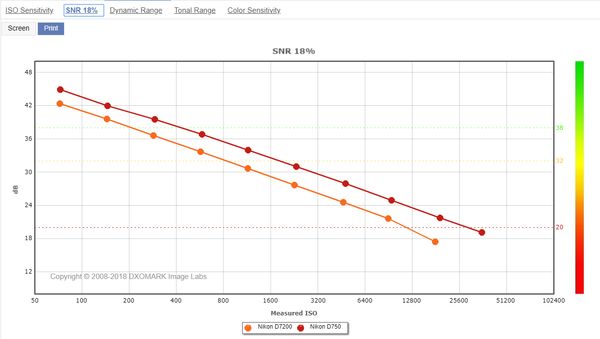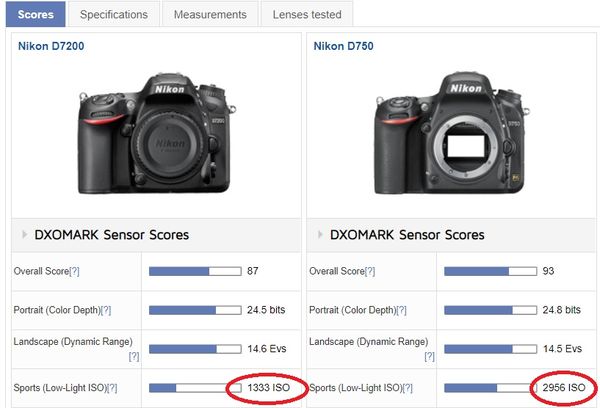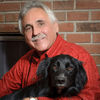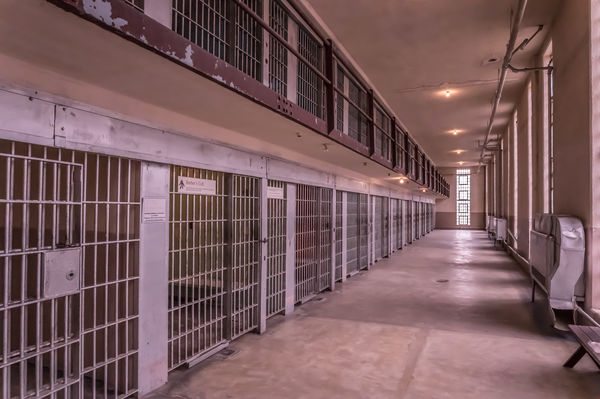ISO Sensitivity
Feb 17, 2019 22:50:10 #
Strodav
Loc: Houston, Tx
One of the best dslr values out there right now is the D7200 24mp ISO 100 - 25600. IMHO, it's as close to an FX camera a DX can get. I still use mine even though I have both the D500 and D850. After that I'd look at a used D800, used D810, and of course if you have about $3500 laying around, go for the D850, which is arguably one of the best dslrs ever made.
As far as ISO goes, I set my D7200 and D500 to 100-400 and my D850 from 64 - 800. How much noise you can tolerate is a very personal choice.
As far as ISO goes, I set my D7200 and D500 to 100-400 and my D850 from 64 - 800. How much noise you can tolerate is a very personal choice.
Feb 17, 2019 23:09:48 #
Strodav wrote:
One of the best dslr values out there right now is... (show quote)
What do you set your auto ISO as a max on your D7200 or do you not use it?
Feb 17, 2019 23:23:16 #
Strodav
Loc: Houston, Tx
ronpier wrote:
What do you set your auto ISO as a max on your D7200 or do you not use it?
If I've got a studio or studio like setup I'll set the ISO to the camera's base ISO. On my D7200, D500, and D800 it's 100. On my D850, it's 64. Otherwise, I turn on auto ISO and set the range from the base ISO to an ISO with an acceptable noise level to me. D7200 100-400, D500 100-400, D800 100-800, D850 64-800.
Others don't mind higher ISOs, but I find the advertised high end ISO noise levels completely unacceptable unless I'm using the noise for mood or effect. In a special circumstance I might use 1600. There is a very good way to crank up the ISO and still get very low noise. Have to be on a tripod with a remote release shooting a still scene like a landscape. Take about a dozen shots, maybe a dozen and a half, move them into PS and average them together.
Feb 17, 2019 23:38:22 #
Strodav wrote:
If I've got a studio or studio like setup I'll set... (show quote)
Thank you. Very good info to know and use.
Feb 17, 2019 23:45:16 #
For what it’s worth (and the above comment is correct - how much noise you can tolerate to get the shot is a personal choice), I shoot my Canon FF 5D3 and 5D4 regularly at ISO 10,000 to 12,800 without noticeable noise, but I do my raw conversion with Canon’s DPP SW, which has proven to be about a half stop better in noise than Photoshop’s ACR raw converter. I just leave the auto ISO on with a max of 12,800 and just don’t worry about it - more important to get the shot.
I think many users are too conservative of the highest ISOs they will shoot, but it depends on the camera. My Canon 7D became noisey above 1600 and since I was shooting indoor sports, concerts, musical events and indoor weddings, I found that with adequate shutter speed to stop the motion, and even with fast lenses, I often needed to be in the 8,000 - 12,800 range, which drove me to a FF body. At my son’s wedding which was in a well-lit indoor venue, the pro photographer was shooting a pair of D750s and he was usually in the 6400-10,000 range, and his results were excellent. I was shooting a Canon 5D3 with an 85 f1.8 prime typically at 1/200 f2-f2.5 and ISOs in the 6400 to 10,000 range also, without noticeable noise. It’s those situations where a low noise modern FF is worth its weight in gold.
I think many users are too conservative of the highest ISOs they will shoot, but it depends on the camera. My Canon 7D became noisey above 1600 and since I was shooting indoor sports, concerts, musical events and indoor weddings, I found that with adequate shutter speed to stop the motion, and even with fast lenses, I often needed to be in the 8,000 - 12,800 range, which drove me to a FF body. At my son’s wedding which was in a well-lit indoor venue, the pro photographer was shooting a pair of D750s and he was usually in the 6400-10,000 range, and his results were excellent. I was shooting a Canon 5D3 with an 85 f1.8 prime typically at 1/200 f2-f2.5 and ISOs in the 6400 to 10,000 range also, without noticeable noise. It’s those situations where a low noise modern FF is worth its weight in gold.
Feb 18, 2019 00:18:10 #
TriX wrote:
For what it’s worth (and the above comment is corr... (show quote)
Thanks. Good to know especially when I am considering a D750.
Feb 18, 2019 07:01:57 #
LWW
Loc: Banana Republic of America
The D7200 will in fact shoot very well at 12.8K.
Life is a compromise and if the choice is between too slow a shutter speed and high ISO or too shallow a DOF and high ISO I’ll take the higher ISO every time.
At very large enlargements it will be seen, but barely and only in fine details.
25.6K ISO DOES GET A BIT RAGGED, but if that’s what it takes to get the shot I’d rather use it than not get the shot at all.
Life is a compromise and if the choice is between too slow a shutter speed and high ISO or too shallow a DOF and high ISO I’ll take the higher ISO every time.
At very large enlargements it will be seen, but barely and only in fine details.
25.6K ISO DOES GET A BIT RAGGED, but if that’s what it takes to get the shot I’d rather use it than not get the shot at all.
Feb 18, 2019 09:03:48 #
ronpier wrote:
I am looking at upgrading to Full Frame FX from DX but I am confused about ISO sensitivity and low light performance: Why does a D7200 or D3400 have native ISO sensitivity of 100-25,600 and a full frame D750 is only100-12,800? All are 24mp. I thought that a full frame FX sensor with larger pixels would be more sensitive to light than the DX sensor. What am I missing here? So looking forward to your UHH answers since Google doesn’t have a clue. Thanks!!
Attached are segments from DXO's camera table on sensor performance. The very latest cameras have not yet been included. It will provide a comparison between FF and APS-C sensors. The column on the far right is the highest ISO value at which the camera will provide an excellent image in their opinion.
As one can see FF ISOs are much higher (higher numbers are better) than APS-C. Smaller sensors fare considerably worse and are not listed.
However, if you are adept at post processing noise can be reduced substantially. There are other factors that affect image noise such as exposure, lighting, etc..
I'm presenting this information as a rough guide for comparing sensors. It should be noted that this is not a guide for comparing camera performance, it just applies to the sensor.
In my opinion it should be used in part for selecting a new camera. There are other characteristics that are more important. Also if you already own a camera and are satisfied with it, there is no point in comparing.
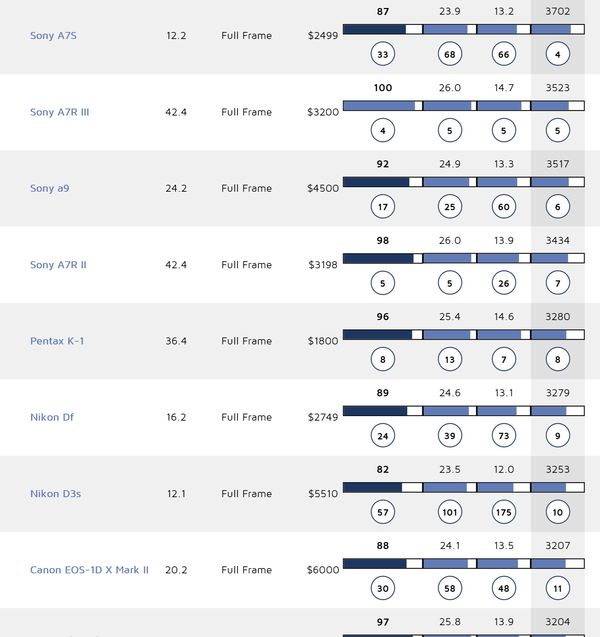
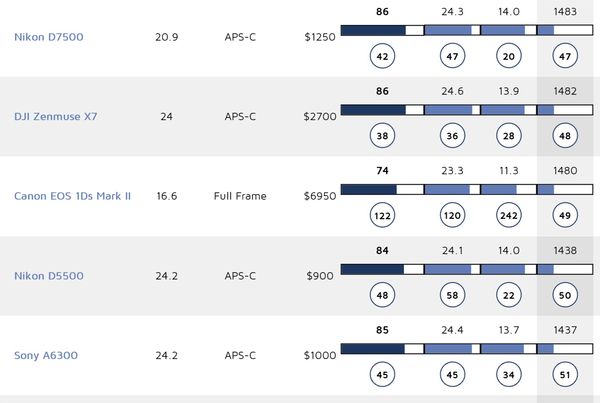
Feb 18, 2019 09:26:26 #
I just loaded both cameras into DXO labs sensor comparison tool. The D750 (red line) has a higher signal to noise ratio than the D7200 (orange line). That's no doubt due to the D750 having larger pixels. I'm not sure why the native ISO of the D750 is not as high as the D7200.
Also, the D750 has a sports low light ratings of ISO 2956. The D7200 is ISO 1333.
Also, the D750 has a sports low light ratings of ISO 2956. The D7200 is ISO 1333.
Feb 18, 2019 09:57:52 #
CO wrote:
I just loaded both cameras into DXO labs sensor comparison tool. The D750 (red line) has a higher signal to noise ratio than the D7200 (orange line). That's no doubt due to the D750 having larger pixels. I'm not sure why the native ISO of the D750 is not as high as the D7200.
Also, the D750 has a sports low light ratings of ISO 2956. The D7200 is ISO 1333.
Also, the D750 has a sports low light ratings of ISO 2956. The D7200 is ISO 1333.
Good data. While the D7200 is an excellent camera and value, there is no doubt about the increased performance of the D750, especially in low light/high ISO environments.
Feb 18, 2019 10:07:22 #
TriX wrote:
Just because a camera has a huge ISO range doesn’t mean it’s useful. In other words, the range really doesn’t tell you much about the actual performance characteristics of a camera...
Word.
I have a D5. The native ISO range goes up to 100K (I don't believe the stated 102.4K is really that precisely determined -- 1 or 2 significant figures should be enough). The extended range goes up to 3 million. Having tried it out at high ISO, it appears to me that 25K is the highest generally useful ISO. 100K can be used with care (and a fair amount of postprocessing). Anything beyond the native ISO range is either for emergency purposes or marketing hype. (Images can be obtained up there but they would take a lot of processing and downsampling to use them for anything reasonable).
Feb 18, 2019 11:02:10 #
ronpier wrote:
I am looking at upgrading to Full Frame FX from DX but I am confused about ISO sensitivity and low light performance: Why does a D7200 or D3400 have native ISO sensitivity of 100-25,600 and a full frame D750 is only100-12,800? All are 24mp. I thought that a full frame FX sensor with larger pixels would be more sensitive to light than the DX sensor. What am I missing here? So looking forward to your UHH answers since Google doesn’t have a clue. Thanks!!
I see that you got a lot of good answers as to the "why" question you asked, so I am going to suggest that now you check out Dpreview and look at their noise tests for the D750. You can compare the test at various ISO's to other cameras via a drop down menu. If the D7000 and D3400 are not in that comparison list, you can still look to see if they were reviewed and check their noise tests.
Noise is noise, and higher ISO in any camera will not be as pleasant as the lower ones. Decide if you can live with what you will get at the ISO's you might actually choose. Newer cameras definitely have better sensors and I shoot auto ISO now in situations where I would have worried about the noise in previous versions of my cameras.
Feb 18, 2019 12:20:12 #
ronpier; a couple of our favorite Nikons are the D7200 and D700, as well as a D40 and D300. The difference between DX and FX has boiled down to how much research we've done on each model, added to the never-ending process of adding other's knowledge and experience of ours, summing it up to what we can manage to retaining all of that data in the neural interface contained between the ears. IE, beauty is in the eye of the beholder:) Despite the eternal DX/FX and 'ever-more megapixels must therefore are better' debate (wink), most experienced photographers create great photographs from both formats. We have a one megapixel CF Kodak which was used at our wedding 20 years ago; it's primitive and slow but takes darn good shots.Good luck and happy shooting. sv
Feb 18, 2019 16:20:33 #
DirtFarmer wrote:
Word. br br I have a D5. The native ISO range goe... (show quote)
And a D5 is about as good as it gets in terms of 35mm digital high ISO performance.
Feb 18, 2019 17:20:27 #
IDguy
Loc: Idaho
joer wrote:
Where you went wrong is believing the camera manufacturer's claims for ISO range. The number given are just marketing hype, unless you don't care about image noise. FF sensors provide better low light performance than crop sensors, providing they are of similar vintage. ISO 6400 is what you can expect from FF if you want decent IQ. Its about double than from the very best crop sensors.
Check out DXO.com for more realistic ISO numbers for most cameras, as well as other data.
Check out DXO.com for more realistic ISO numbers for most cameras, as well as other data.
Here's one at ISO 16,000 from my Nikon Z6. It is their latest generation and a little better than the Z7 because of larger pixels.
I used matrix metering and auto ISO with A mode at f16.Shot in RAW and standard Lightroom noise reduction. Camera noise reduction set on normal but I don't think it affects RAW images.
If you want to reply, then register here. Registration is free and your account is created instantly, so you can post right away.




